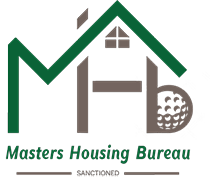Guide to Better Photos
No matter what your house is worth, with the right staging, lighting and camera you can make it look like a multi-million dollar home. But the key is preparation. Potential renters want to see your home at its best. They are looking not only for privacy and comfort, but also for beauty. These are people who typically stay in 4-star hotels.
Hire A Real Estate Photography Professional

Once your home is clean and staged, the next step is good photography. Unless you are a professional photographer, or an amateur with great skills, you should consider hiring a pro. A basic real estate photography shoot from a professional photographer generally costs anywhere between $110 and $300 per shoot for photos only (no video). That's a small investment considering the possible return. We have partnered with Top Flight Media to provide optional professional photography services and 360 degree virtual video tours. Click here to learn more.
Good Camera is A Must for Do It Yourself
Digital cameras have become less expensive over the years so you don’t have to spend thousands to properly photograph a home. Here are some camera options to consider:
Smartphone: Smartphone manufacturers seem to be in a contest to see who can build the best camera, so it's very likely your phone is all you need. Consider purchasing attachments such as a lens, stand or light for taking real estate photos with your phone.
Digital point-and-shoot: Since the advent of high quality smartphone cameras, these little cameras are not as popular as they once were, but if you don't have a good camera phone this is a good way to go.
Digital SLR: This is the preferred choice, but expect to spend between $200 and $500 for the things you need, such as a tripod and wide angle lens. These cameras work well in any light, have interchangeable lenses (for a wide variety of shots) and typically allow more control over photo quality.
A wide-angle lens allows you to show more of a room. These lenses have become relatively inexpensive — you may be able to find a standard 24mm lens for around $100.
Tips for Taking Good Photos
If you don't have a wide angle lens, you can still get good images with any of the camera choices. Shoot from a corner or doorway. This will help make rooms look larger. Shooting from an angle adds depth to your photos, especially the outside of your home. Be creative, don’t stand directly facing a wall when you shoot.
There is no film cost to worry about, so take lots of pictures of every room and around the exterior from different angles. Upload the images to your computer and look at the pictures full size to see which angles worked best and use those photos in the listing.
Keep Lighting Consistent
Lighting is crucial. Experiment. See if the room looks better with the lights on or off. Room lighting can make a space feel warmer and more welcoming. Natural light can provide an even temperature across your photos, but it can also make them feel sterile if there is not enough natural light. You might want to try a combination of both.
If you use a flash, do so with care. Bounce your light off the ceiling or walls, if there are darker areas in the space. Bouncing your flash makes the light softer and reduces the harsh shadows. Use a neutral-colored surface when bouncing off the light. Test your frame first to check if you are getting harsh shadows or hotspots on your image. Experiment the direction where you’re pointing your flash. Often, it’s a matter of practice and testing out what works best.
If you have a space where there’s not much natural light, like a basement or interior room, a diffuser or light stand will let you control the direction of the light and ensure even distribution. Add this to your shopping list.
Turn off the lamps. Lamps can create an imbalance in a room’s lighting. It’s best to use other light sources when taking real estate photos.
Purchase a diffuser or umbrella flash stand. If you have a space where there’s not much natural light, like a basement or interior room, a diffuser or light stand will let you control the direction of the light and ensure even distribution.
Make Use of Natural Light
When it comes to real estate photography lighting, natural light can be a useful tool. When used strategically, it can often be better than ambient lighting. Here are some tips from Zillow.
- Open blinds and windows to let natural light into a home.
- Avoid shooting directly into bright windows, as doing so can make a space feel smaller and add glare.
- Use a wide-aperture setting so your camera lets in as much light as possible (if your camera has an adjustable F-stop, lower it to around f/1.8).
- Shoot with the sun behind the camera to brighten the home and avoid shadows.
- Take exterior shots on overcast days to remove all shadows and help prevent glare.
- Avoid rainy days and nighttime shots — and any other conditions that can make a home appear gloomy.
Use a Tripod
Zillow's experts say one of the easiest (yet most ignored) tips for real estate photography is to use a tripod. While a tripod is helpful in any situation, it’s critical when taking interior shots using natural light, as natural lighting is best captured with a slow shutter speed. Get an adjustable tripod and you’ll be able to eliminate blurry images.
Adjust Your Camera So Edges are Vertical
Wondering how to take real estate photos like a pro? Keep your camera’s vertical axis lined up with walls and other vertical objects. In addition to eliminating blurry images, a tripod will hold a camera steady and can be adjusted for a perfect shot. Homes are filled with vertical lines, and you want to make sure they’re perfectly up-and-down when shooting. Crooked images will appear out of place when buyers are browsing real estate listing photos.
Edit If You Can
If you have a photo editing program and the know-how, you can easily edit photos to appear warmer and more welcoming. Many computers even come with basic photo editing software, which may let you adjust brightness, contrast and other settings. Be careful not to misrepresent the home. This could lead to upset renters when they arrive and don’t see what they expect.
Post 20 Best Photos
According to the Zillow photo experts, for a standard home around 1,900-2,600 square feet, 20 photos will give an accurate portrayal while allowing for multiple shots that focus on the property’s best features. For a smaller one-bedroom home, 10 images may be plenty. The real estate photography tips for shooting a whole property are:
- Two wide-angle shots of the kitchen, living room and each bedroom
- One photo of each bathroom, unless they’re particularly large
- One to three photos of the backyard
- One to two photos of the front of the home
- One shot of each additional room, such as the laundry room and garage
Too few photos may leave the buyer wondering why more isn’t being shown or confuse them about the home’s layout. Too many photos can cause buyers to lose interest — if there are more than a couple shots of each room, they may quit browsing.
